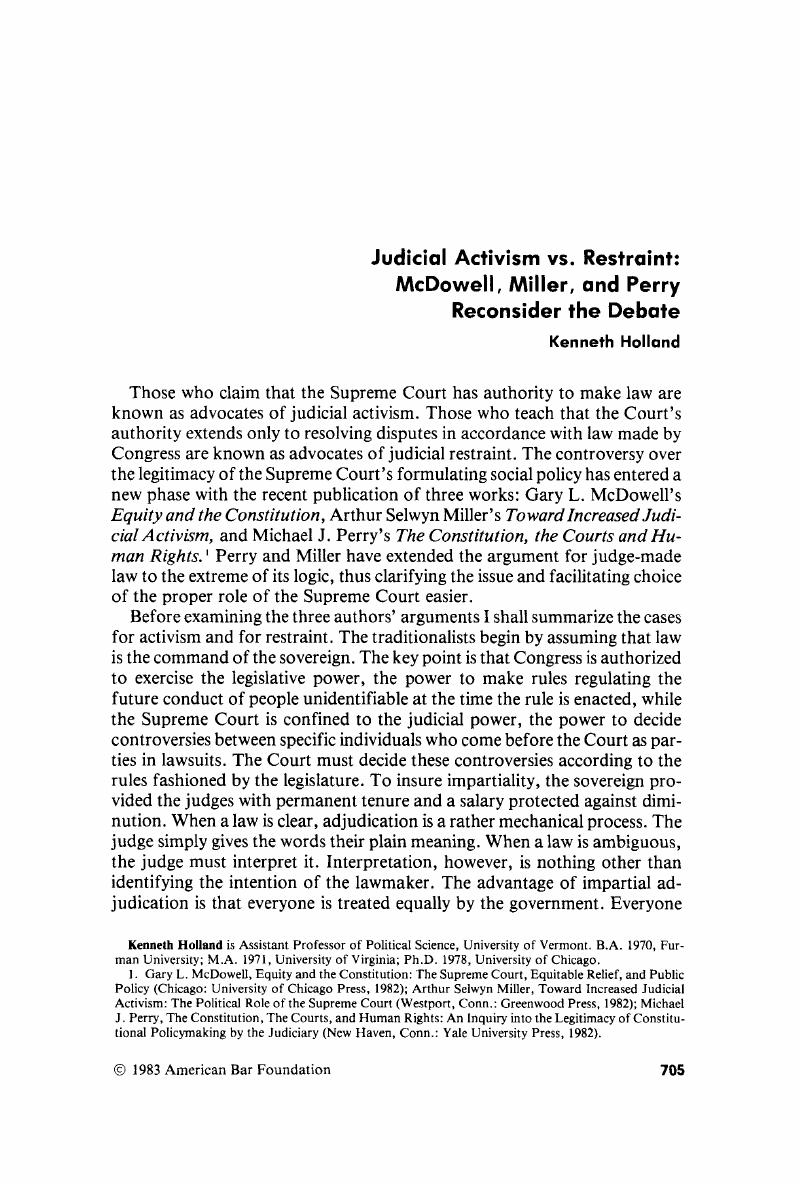No CrossRef data available.
Article contents
Judicial Activism vs. Restraint: McDowell, Miller, and Perry Reconsider the Debate
Published online by Cambridge University Press: 20 November 2018
Abstract

- Type
- Review Essay
- Information
- Copyright
- Copyright © American Bar Foundation, 1983
References
1 Gary L. McDowell, Equity and the Constitution: The Supreme Court, Equitable Relief, and Public Policy (Chicago: University of Chicago Press, 1982); Arthur Selwyn Miller, Toward Increased Judicial Activism: The Political Role of the Supreme Court (Westport, Conn.: Greenwood Press, 1982); Michael J. Perry, The Constitution, The Courts, and Human Rights: An Inquiry into the Legitimacy of Constitutional Policymaking by the Judiciary (New Haven, Conn.: Yale University Press, 1982).Google Scholar
2 Marbury v. Madison, 5 U.S. (1 Cranch) 137 (1803).Google Scholar
3 For an excellent elaboration of this view see Donald L. Horowitz, The Courts and Social Policy (Washington, D.C.: Brookings Institution, 1977).Google Scholar
4 Miller at 234. He would abolish the rules of justiciability and permit the Court to render advisory opinions.Google Scholar
5 Perry's “religion” is that of secular humanism, not of divine revelation.Google Scholar
6 The Court substantiated this power in Ex parte McCardle, 74 U.S. (7 Wall.) 506 (1869).Google Scholar
7 United States v. Carolene Products Co., 304 U.S. 144, 152 n.4 (1938).Google Scholar
8 Miller, supra note 1, at 168,244,286, 293, and Perry, supra note 1, at 76, 108. The work referred to is John Rawls, A Theory of Justice (Cambridge: Harvard University Press, Belknap Press, 1971).Google Scholar
9 Perry at 164.Google Scholar
10 Id. at 163–64; Miller at 301, 317.Google Scholar
11 John Hart Ely, Democracy and Distrust: A Theory of Judicial Review (Cambridge: Harvard University Press, 1980).Google Scholar
12 Brown v. Board of Education, 347 US. 483 (1954).Google Scholar
13 The Red Lily (London: John Lane, 1908). at 95.Google Scholar
14 The Federalist No. 10 (emphasis added).Google Scholar
15 Rawls, supra note 9, at 73–74 (emphasis added).Google Scholar
16 Id. at 61; Perry at 2.Google Scholar


